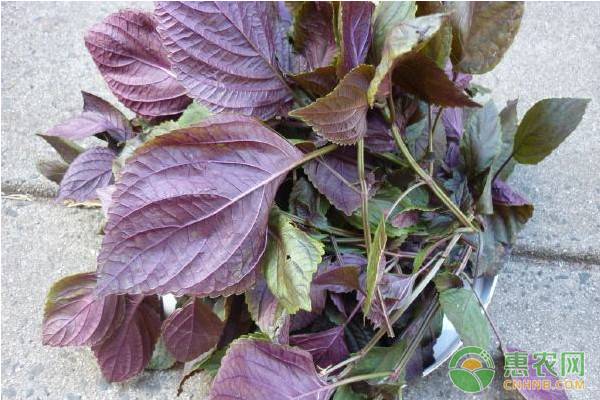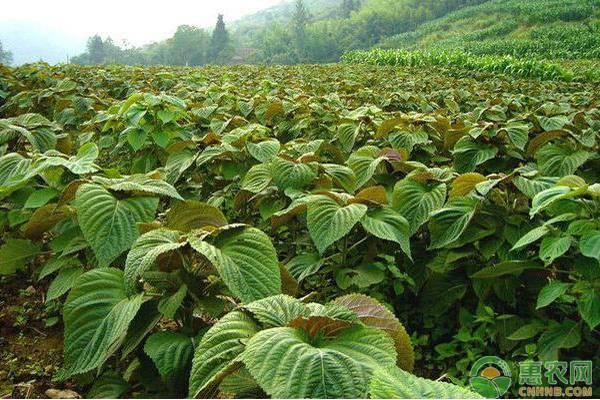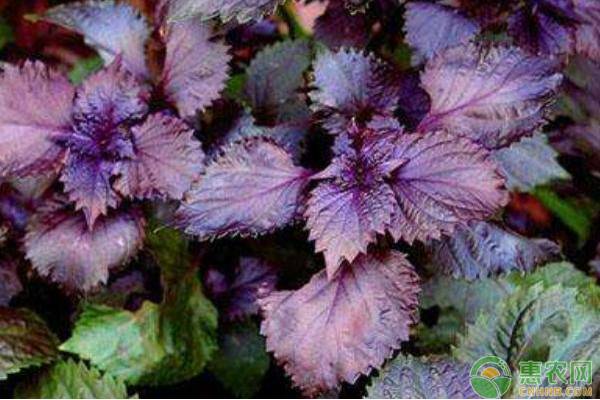Key points of high-efficiency cultivation management technology of perilla
How is the perilla? I don't know if you are familiar with the plant of Perilla. Xiaobian is no stranger. Our stewed fish, seafood, and the like all like to put the basil in the taste. If you buy aquatic products on the market, The boss will send a few perilla, so the perilla is a home-made condiment. There are some snacks in life, and also use perilla, such as perilla peach ginger and perilla. Let's take a look at the cultivation management methods of perilla.

1 Perilla requirements for soil
Perilla is resistant to thinness and adaptability. Under normal circumstances, as long as there is a place where plants grow, perilla can grow, but the soil is good, warm and moist, suitable for growing soil, the perilla grows vigorously, the yield is higher, and the quality is better. The former stalk of perilla is the first choice for planting vegetables, and can be planted under fruit trees and young forests.
2 breeding methods
In general, perilla is propagated with mature seeds.
2.1 Live
The southern and northern regions generally differ in planting time by about one month. In the south, the field is usually broadcast live in early March and the north in mid-April. The live broadcast can be divided into two types: strip broadcast and hole broadcast. The strips are spread on the whole rafts in shallow grooves of about 1 cm in line spacing of 60 cm. The seeds are mixed with fine sand and sprinkled evenly in the ditch, then sprinkled with fine sand in the ditch and slightly suppressed. The hole is planted in the whole raft, according to the row spacing 50cm, the hole distance 30cm for sowing, and then the soil is covered in the hole, and the seedling can be emerged 5~7d after sowing.

2.2 Seedbed seedlings
Generally, the method of seedling transplanting is adopted in the case of a small amount of seeds, a dry weather or a low temperature. When raising seedlings, choose a sunny, warm and well-grounded plot to make a sputum, apply enough base fertilizer, and pour a permeable water. After the water seeps, the temperature of the seedbed rises and spreads in the raft, and then covers the soil. During this period, the humidity of the seedbed should be maintained. If the temperature is low at this time, the seedlings can be covered and the weak and weak seedlings should be removed. When the height of the seedling reaches about 5cm, the transplanting is carried out on cloudy or afternoon, and the water is poured in the water for 1~2 times after planting to ensure the survival rate of transplanting.
3 Field management
3.1 When the seedlings of the perilla seedlings reach about 10cm, the seedlings will be fixed. The seedlings will be seeded and the seedlings will grow at 1 to 2 plants per hole. If there is a shortage of seedlings and ridges, the seedlings should be combined with the seedlings in time to replenish the seedlings. When fixing the seedlings, be careful not to leave the seedlings too dense. If the density is too large, the plants are long, the stems are weak, the branches of the plants are reduced, and the lower leaves are too small, which affects the yield of the leaves. If the density is too large, it will also cause difficulty in cultivating and weeding.
3.2 For the seedlings of seedbed seedlings, when the height of the seedlings reaches about 5cm, they can be transplanted to the field. Before transplanting, they should be well grounded, apply enough base fertilizer, choose rainy days or afternoons, and pour 1~2 times in time after planting. Permeable to ensure the survival rate after transplanting.
3.3 Fertilize and water. Perilla enters the rapid growth period 2 to 3 months after the seedlings are fixed, and the tender leaves of the perilla are listed in large quantities in this period, and the water needs fertilizer to reach the peak. Fertilization and watering are carried out in a timely manner depending on the growth of the plants during growth. Fertilizers are generally based on quick-acting nitrogen fertilizers, combined with fertilization for watering, to meet the needs of plant growth. This period is a period in which the temperature of high weeds grows vigorously, and the growth of weeds in the field is observed at any time, and the weeds in the field are removed in time.

4 harvesting
The harvesting methods and time of different parts of perilla are also different.
4.1 Young leaves. The young leaves of fresh food can be harvested at any time.
4.2 Perilla. In the north, the whole plant is cut with a sickle in the upper and middle of October, and dried and threshed on the drying field.
4.3 Suye leaves. Choose sunny harvesting, dry in time to prevent mold and deterioration.
4.4 Suzi Terrier. Generally, the perilla fruit is harvested before it grows out, and it is dried in time after cutting.
For the wonderful pictures and popular comments on the cultivation techniques of perilla, you may be interested in the following recommended contents. Welcome to read.
Plant Extract,Pure Plant Extract,Organic Plant Extract,Natural Plant Extracts
Allied Extracts Solutions , https://www.alliedadditives.com
